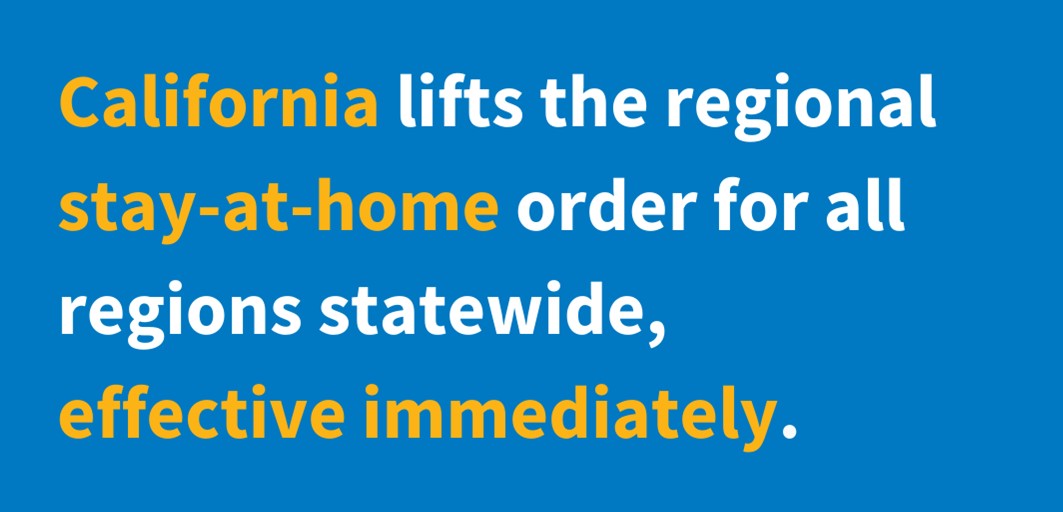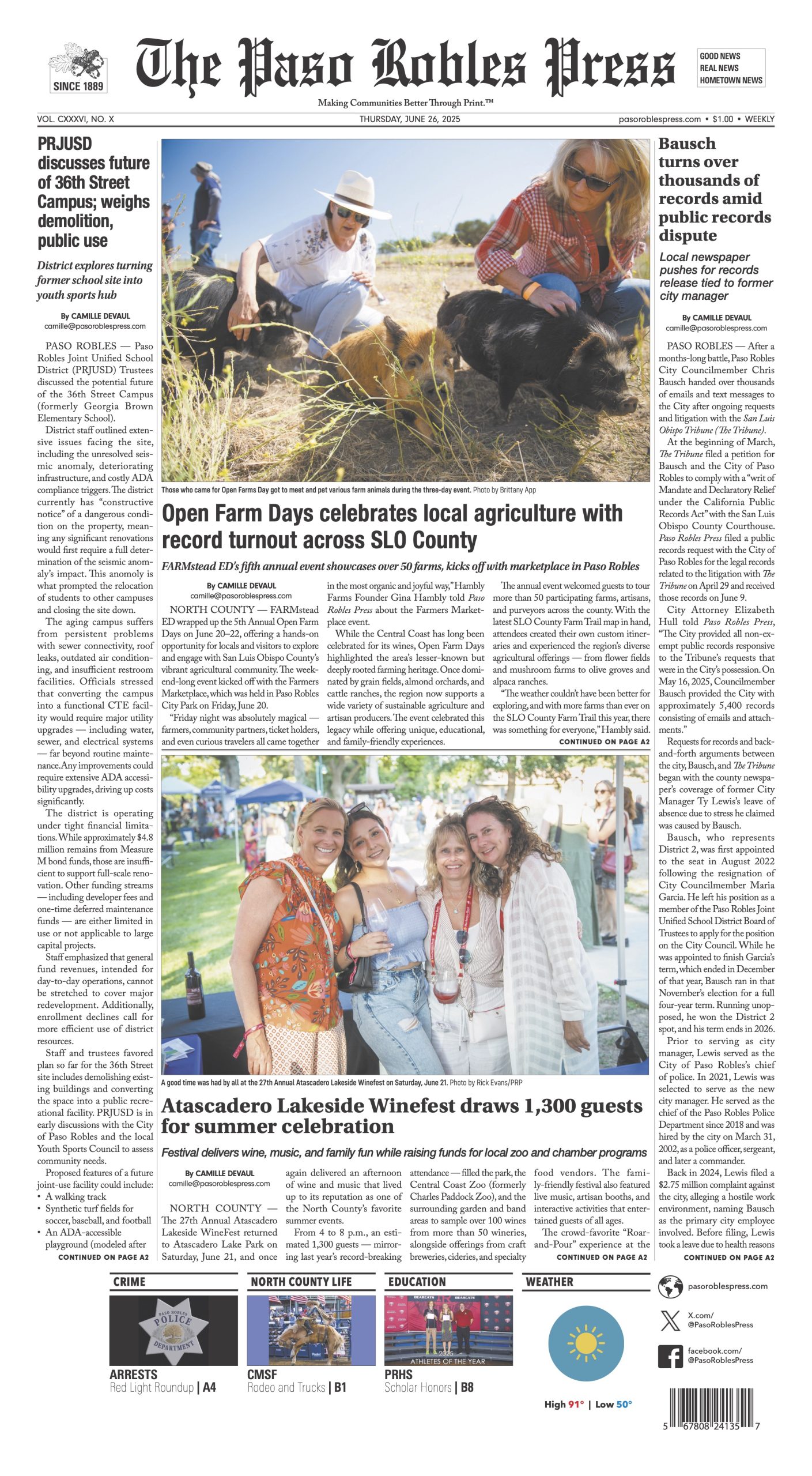Conditions Improving Statewide, Allowing Most Counties to Return to Most Strict (Purple) Tier of Blueprint for a Safer Economy
SACRAMENTO – Today, Monday, Jan. 25, officials with the California Department of Public Health (CDPH) ended the Regional Stay at Home Order, lifting the order for all regions statewide, including the three regions that had still been under the order – San Joaquin Valley, Bay Area, and Southern California.
According to the press release, health officials state that the four-week ICU capacity projections for these three regions are above 15 percent, the threshold that allows regions to exit the order. The Sacramento Region exited the order on Jan. 12, and the Northern California region never entered the order.
This action allows all counties statewide to return to the rules and framework of the Blueprint for a Safer Economy and color-coded tiers that indicate which activities and businesses are open based on local case rates and test positivity. The majority of the counties are in the strictest or purple tier. Tier updates are provided weekly on Tuesdays. Individual counties could choose to impose stricter rules.
“Californians heard the urgent message to stay home as much as possible and accepted that challenge to slow the surge and save lives,” said Dr. Tomás Aragón, CDPH director and state public health officer. “Together, we changed our activities, knowing our short-term sacrifices would lead to longer-term gains. COVID-19 is still here and still deadly, so our work is not over, but it’s important to recognize our collective actions saved lives, and we are turning a critical corner.”
Health officials caution Californians to continue to wear masks when they leave their homes, maintain physical distance of at least 6 feet, wash their hands frequently, avoid gatherings, and mixing with other households.
State officials reported that in collaboration with local health departments and health care facilities statewide, they took a long list of actions to support California’s hospitals and slow the surge in cases and hospitalizations.
- The Regional Stay at Home Order urged Californians to stay home except for essential activities, which helped lower disease transmission levels and reduce burden on the hospital system.
- California deployed more than 4,100 medical professionals to facilities across the state to ease the burden on frontline health care workers.
- The state provided assistance within hospitals in the form of personal protective equipment, ventilators and help with oxygen supply.
- California also helped hospitals expand their capacity by opening 16 alternate care sites, lower-acuity facilities where COVID-19 patients get a bridge from hospital to home as they are recovering.
- Public health leaders implemented a statewide order to make it easier to transfer patients from over-crowded hospitals to those with more space and staff.
- The administration of vaccines to health care workers has meant that fewer health care workers are falling ill to the virus, which helps keep staffing levels more stable.
“California is slowly starting to emerge from the most dangerous surge of this pandemic yet, which is the light at the end of the tunnel we’ve been hoping for,” said California Health and Human Services Secretary Dr. Mark Ghaly. “Seven weeks ago, our hospitals and front-line medical workers were stretched to their limits, but Californians heard the urgent message to stay home when possible and our surge after the December holidays did not overwhelm the health care system to the degree we had feared.”
Nearly all the counties exiting the Regional Stay at Home Order today are in the Purple or widespread (most restrictive) tier. Services and activities, such as outdoor dining and personal services, may resume immediately with required modifications, subject to any additional restrictions required by local jurisdictions.
See the county map to find the status of activities open in each county.
Because case rates remain high across most of the state, the state’s Hospital Surge Order remains in place to prevent hospitals from becoming overwhelmed.
The Limited Stay at Home Order, which limits non-essential activities between the hours of 10 p.m. and 5 a.m., expires immediately with the Regional Stay At Home Order ending.














